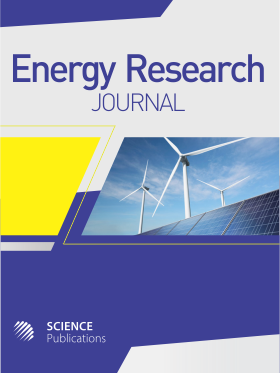Assessment of Efficient Thermal Conversion Technologies and HHV from Compositional Characteristics of Cassava Peelings, Plantain Peelings and Corn Cobs
- 1 Department of Applied Chemistry, National Advanced School of Agro-Industrial Sciences (ENSAI) of the University of Ngaoundere, Ngaoundere, Cameroon
- 2 Department of Civil and Environmental Engineering and Architecture (DICAAR), Faculty of Engineering of the University of Cagliari, Cagliari, Italy
- 3 Department of Chemical Engineering and Environment, University Institute of Technology (IUT) of the University of Ngaoundere, Ngaoundere, Cameroon
- 4 Department of Chemistry, Physics, and Environment, Faculty of Sciences and Environment, Dunărea de Jos” University of Galați, 111 Domneasca Street, 800201 Galați, Romania
Abstract
The understanding of compositional characteristics permits to predict the efficient thermal conversion technologies and Higher Heating Value (HHV). Although HHV can be determined directly, many models have been proposed for HHV prediction. They are based on proximate, ultimate, and structural analysis and require much data collected. The present work assesses to predict efficient thermal conversion technologies and HHV of the most abundant agricultural biomass from Cameroon, namely cassava peelings, plantain peelings, and corn cobs, by using the existing models and exploring the calculation of HHV from the formula. The results show that investigated biomasses can be efficiently used in thermochemical conversion to produce bio-oil/syngas, in the biochemical process to produce bioethanol/biogas, and in the physical process to densify feedstock into fuel briquette. Flue gas reveals a value less than the toxic values fixed by the European standard for household waste incineration and can therefore be used as an environmentally friendly bioenergy source. Nevertheless, the levels of S and N could be taken into account in the design of a gasification plant to control the emission of NO2 and SOx-derived pollutants as their value is more than the limit fixed. Amongst the existing models, the model based on ultimate analysis gives the best correlation. The Average Absolute Error (AAE) is ranging from 2.47 to 10.71%. The calculation of HHV from combustion enthalpy and the formulae of cassava peelings, plantain peelings, and corn cob are C5H4O2, C5H8O4, and C3H4O2 respectively. The HHV derived from them is 16.13, 16.27, and 20.02 MJ/kg for cassava peelings, plantain peelings, and corn cob respectively. The AAE lies within 2.52 and 8.08%. These values are lower than those obtained from the literature models. These AAE varies between 4 and 10%. The AAE of the twenty biomasses from the literature ranges from 0.16 to 10.96%.
DOI: https://doi.org/10.3844/erjsp.2022.30.41

- 2,928 Views
- 1,960 Downloads
- 7 Citations
Download
Keywords
- Biomass Conversion
- Higher Heating Value
- Thermochemical Process
- Biochemical Process
